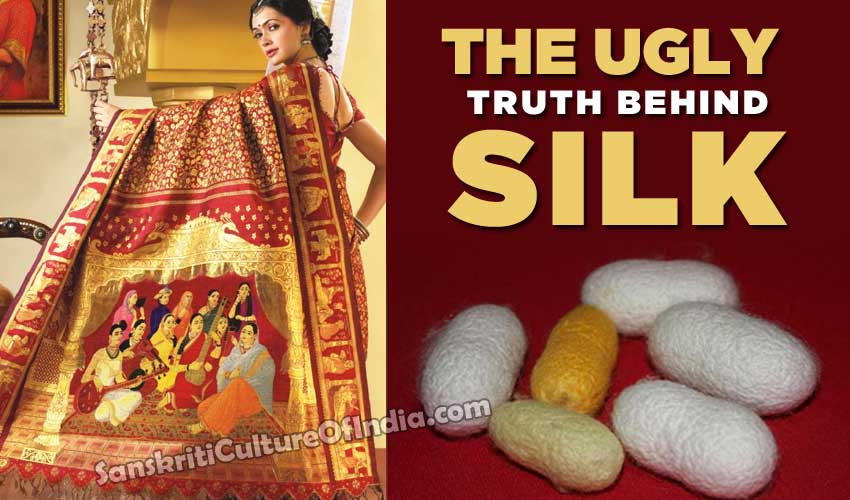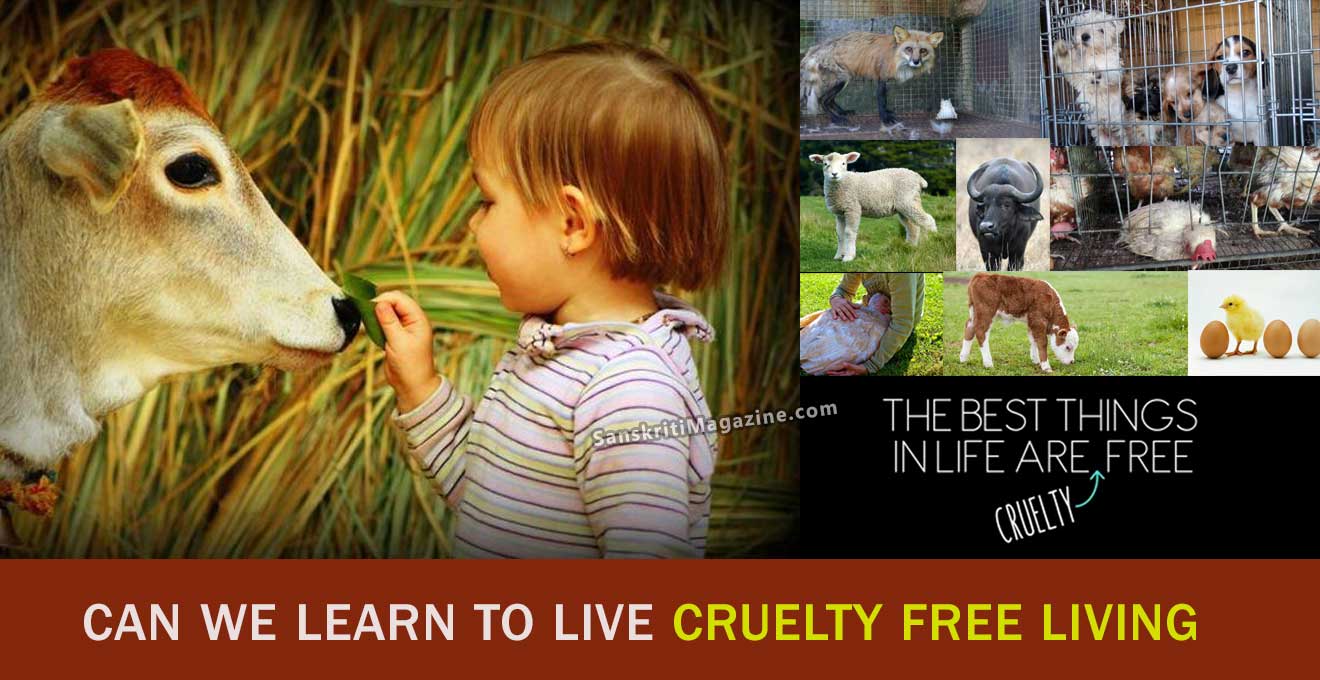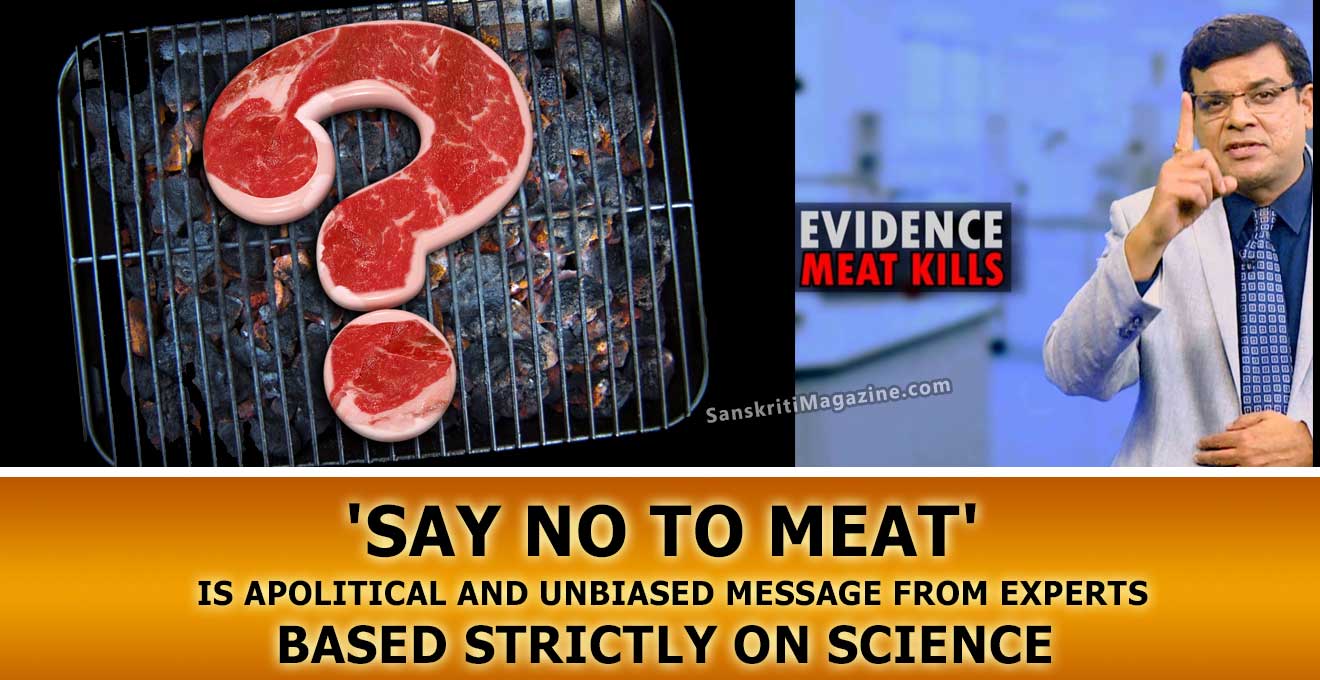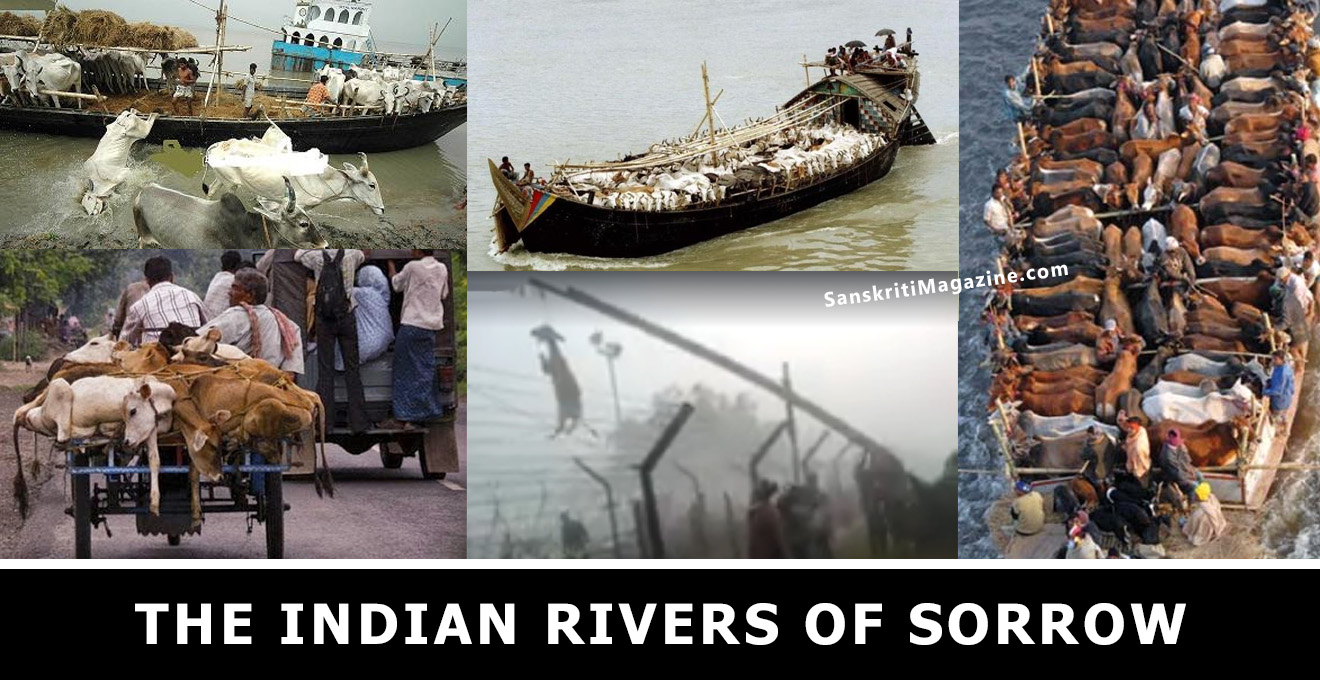India is the second largest silk manufacturer in the world, contributing to about 18% of world’s total raw silk production. It is interesting to note that the country’s own requirement for silk is larger than its current production, creating imports from other countries and encouraging manufacturers to step up their efforts to produce more.
And who can deny the beauty of silk, that intricately woven piece with the embroided design, producing a stunning shimmer on a material worthy of the Gods themselves? On special days and rituals, the devotee dresses up in silk clothings themselves, offer silk garments to the temple deity or clothes to the priests. Every Indian bride dreams of wearing the best silk sari on her wedding day while the groom also adorns equally alluring clothes made of the finest silk material. Soft, smooth and shimmering, silk is perhaps the most attractive textile man has ever created.
But, how many of us are aware of the dark side of silk? That millions of little lives are killed just so we can look our best in our finest of clothing.
History of Silk
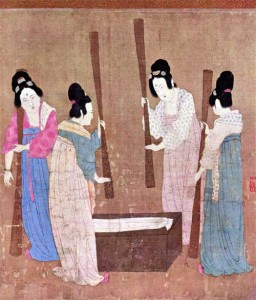 According to Chinese legend, the Empress Si Ling Chi discovered silk 5,000 years ago when sitting drinking tea under a Mulberry tree. A cocoon fell into her tea and a long thread began to unravel. The story tells that the Empress and the Emperor soon discovered that the thread could be woven to make a soft fabric, and they began to use silk in the production of clothes.
According to Chinese legend, the Empress Si Ling Chi discovered silk 5,000 years ago when sitting drinking tea under a Mulberry tree. A cocoon fell into her tea and a long thread began to unravel. The story tells that the Empress and the Emperor soon discovered that the thread could be woven to make a soft fabric, and they began to use silk in the production of clothes.
For 2,000 years, the Chinese kept the processes of silk production a secret and as such they controlled the world market. Eventually however, the secret was stolen and spread across the globe to Japan, India and mainland Europe. In 1685, Louis XIV revoked the religious liberties of Protestants living in France and as a result, French silk workers sought refuge in the UK. This was the catalyst for the UK silk industry. French silk workers settled in London and began to weave; they also taught the local community how to weave. The UK silk industry grew rapidly and was able to monopolise the domestic silk market for a number of years. Currently, the UK produces over £170 million worth of silk goods each year (The Silk Association of Great Britain).
What is Silk?
Silk is the name given to a soft fabric made from the fine thread produced by certain insects. The most commonly used insect is the Bombyx mori, a moth native to China. The pupa produces the silk thread to build a cocoon in which to enter the final stage of metamorphosis and become an adult moth.
Tasmin Blanchard, author of the ethical fashion book Green is the New Black says: “Commercial silk production is innately cruel. Silk might be biodegradable, renewable, organic and even fair trade. But the traditional production process still requires that moths never leave the cocoon alive. In order to prevent damage to the thread, the larvae are boiled or roasted alive – silkworm cocoons are baked at about 100 degrees centigrade for over two hours, which kills the worms and also makes the cocoons easy to unravel without breaking the thread. And there we were, thinking silk was a lovely natural ethical fibre.” (Blanchard, 2008).
Life of a silkworm
The Bombyx mori (the breed of moth most commonly used in silk production) has four lifecycle stages: the egg, the larva, the pupa and finally, the adult moth stage. Unfortunately, the Bombyx mori is now extinct in the wild and exists only in silk farms and is now commonly referred to as silkworm (although it is not a worm, but a caterpillar). These wonderful creatures no longer live their natural life span, nor do they experience each stage of their lifecycle. Most silkworms are killed during the pupae stage; only those used for breeding are allowed to live to become adult moths.
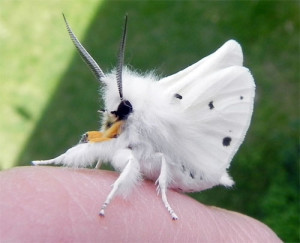 A female moth will lay around 400 eggs at a time (Handcrafted-silk-pillows.com, on-line), around 85 per cent of which will hatch. In nature, this would occur in spring, but in captivity the insects are kept in a controlled environment and therefore the farmers are able to control how often breeding occurs. After a week, the eggs hatch to reveal larvae (around 3 mm in length), who will begin to feed on the mulberry leaves provided. During the next four weeks, the larvae will continue to eat until they have grown 10,000 times their original size. Once fully grown, the larva is ready to begin weaving his cocoon. He attaches himself to a twig (or artificial replacement) and begins to secrete liquid silk from his glands, which is forced through openings in his head called spinnerets. He also secretes seracin (a protective gum) and, upon contact with the air, the liquid silk becomes a silk filament. The larva wraps the filament around his body in a figure of eight movement and within three days he is completely contained within his cocoon. The cocoon is made from a single continuous thread that can be up to one mile in length.
A female moth will lay around 400 eggs at a time (Handcrafted-silk-pillows.com, on-line), around 85 per cent of which will hatch. In nature, this would occur in spring, but in captivity the insects are kept in a controlled environment and therefore the farmers are able to control how often breeding occurs. After a week, the eggs hatch to reveal larvae (around 3 mm in length), who will begin to feed on the mulberry leaves provided. During the next four weeks, the larvae will continue to eat until they have grown 10,000 times their original size. Once fully grown, the larva is ready to begin weaving his cocoon. He attaches himself to a twig (or artificial replacement) and begins to secrete liquid silk from his glands, which is forced through openings in his head called spinnerets. He also secretes seracin (a protective gum) and, upon contact with the air, the liquid silk becomes a silk filament. The larva wraps the filament around his body in a figure of eight movement and within three days he is completely contained within his cocoon. The cocoon is made from a single continuous thread that can be up to one mile in length.
Silk producers desire the continuous nature of the silk filament as this creates the texture of the material. Inside the cocoon, the caterpillar has transformed into a chrysalis and then into a moth and is ready to rejoin the outside world. The next natural step is for the moth to secrete a liquid to dissolve the cocoon. Silk farmers, however, want the silk filament to remain a continuous thread and prevent the moths from secreting liquid by killing them. Silk farmers have numerous ways of slaughtering the moth and the most commonly used method is to place the cocoon (with liveinsect still inside) into boiling water. Other methods include baking the cocoons in an oven, or exposing them to long periods of hot sunlight. No concern is given to the animals’ welfare and they are not stunned before slaughter. This is an unquestionably cruel and barbaric practice.
The boiling water melts the seracin that holds the silk together and allows the silk filament to be unraveled. A thread of silk for weaving requires at least three (and up to 20) silk filaments to be twisted together. The fewer filaments used, the more delicate the silk thread shall be.
Hormones are sometimes given to the larvae to ensure that they grow bigger, thus guaranteeing a bigger cocoon and a longer silk filament. Juvenile hormones can also be given to force the larvae to spin for longer than is necessary; this again ensures the farmer is able to gather more silk.
One cocoon is made of a single thread about 900 metres long, and about 3,000 cocoons are needed to make one pound of silk (Wong, 2000). This means that hundreds of silkworms are killed for just one silk scarf or tie.
Silk Workers
Most silk production takes place in developing countries such as China and India where workers endure low wages and poor working conditions. Workers in such countries do not have the same rights as they would in the UK and therefore they have little legal protection. This means that workers can be exploited and unfairly treated. Of course this helps to keep costs low and is one of the reasons why silk is so readily available at a low cost in today’s market. If countries such as the UK and the United States produced raw silk themselves, the price would increase dramatically.
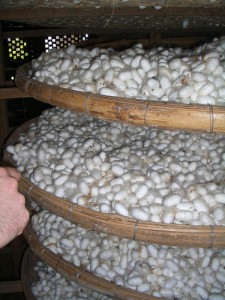 Human Rights Watch is an organisation that investigates human rights’ infringements across the world. In 1996 they visited India to investigate the silk industry. The report they published stated the following: “Reeling is the process by which the silk filaments are pulled off the cocoon. The cocoons are cooked in boiling water in order to loosen the seracin, a natural substance holding the filament together. The reeler dips his or her hands into the scalding water and palpates the cocoons, judging by touch whether the fine threads of silk have loosened enough to be unwound … More than 80 per cent of silk reelers are under 25-years-old, with most of them between ten and 15-years-old.” (Human Rights Watch, 1996).
Human Rights Watch is an organisation that investigates human rights’ infringements across the world. In 1996 they visited India to investigate the silk industry. The report they published stated the following: “Reeling is the process by which the silk filaments are pulled off the cocoon. The cocoons are cooked in boiling water in order to loosen the seracin, a natural substance holding the filament together. The reeler dips his or her hands into the scalding water and palpates the cocoons, judging by touch whether the fine threads of silk have loosened enough to be unwound … More than 80 per cent of silk reelers are under 25-years-old, with most of them between ten and 15-years-old.” (Human Rights Watch, 1996).
In 2003, The Independent featured a story about the report. According to the article, hundreds of thousands of children work 12-hour days and suffer injuries, burns and beatings. The children are bonded labourers, which means that they are bound to their employers in return for a loan to their family. This kind of bond is common in poor countries and the children exchanged in the deal may expect years of abuse and suffering to follow. The article stated that there must be at least 350,000 bonded children working in India’s silk industry (Reeves, 2003).
Children making silk thread routinely dip their hands in boiling water, which burn and blister them: “Their hands become raw and often infected. They breathe smoke and fumes from machinery, handle dead worms that cause infections, and guide twisting threads that cut their fingers.” (Human Rights Watch quoted in The Independent).
Alternative materials
Silk is used for shirts, dresses, ties, bedding, skirts, underwear, linings and other luxury products. However, it can easily be avoided. Artificial silk has been widely available since it was first created in the 1890s. There are various textiles on the market which look and feel like silk including rayon, nylon, polyester, bamboo and cotton. Rayon fabric looks and feels most like silk and can be found in high street shops.
Boycott Silk
Silk is marketed with connotations of luxury and sexiness. The process of boiling moths alive is neither sexy nor luxurious. In fact, silk is the hardened mucus created by a caterpillar during their final stage of metamorphism.
Vegans and many vegetarians refuse to buy or wear silk because of the animal suffering involved. The silk industry exploits silkworms, trade workers and the environment: when you consider all of this it is hard to justify choosing silk.
~ Spinning lies – A report on the silk industry by Fiona Galbraith, Viva!
Ahimsa Silk: Cruelty Free or Just Twisted Words?
There is another method of procuring silk called Ahimsa silk, a process where cocoons are collected after the moths have emerged.
H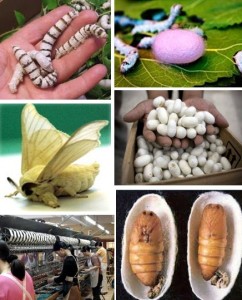 owever Michael Cook who raises silkworms and works in silk in Texas questions whether this method is really cruelty free. He points out the following problems with Ahimsa silk:
owever Michael Cook who raises silkworms and works in silk in Texas questions whether this method is really cruelty free. He points out the following problems with Ahimsa silk:
- If you let all the female moths lay eggs, you end up with so much excess larvae on your hands that they cannot all be fed and some end up dying.
- Whether their death is volitional, accidental, through neglect or through your action, there is not much of a difference between letting them breed and lay eggs that hatch, then let them starve or desiccate to death and killing them by choice.
- Silkworms can no longer be found in the wild but there are some companies marketing their product as “wildcrafted”, implying that cocoons have been gathered from the wild after the metamorphosis.
Animal rights group Beauty Without Cruelty has publicly accused one silk producer in South India of promoting their silk as ahimsa silk. It is true that the moths were allowed to emerge but what happens afterwards belies the very essence of ahimsa:
“After emerging, the male and female moths are kept together for three hours to mate. The females are then segregated and placed in trays to lay eggs. The males are put in a refrigerator, kept semi-frozen, and trotted out repeatedly to mate. They are eventually thrown into a dustbin to die lingering deaths when their virility diminishes.”
We can thus conclude that it is impossible to produce cruelty-free silk without the loss of millions of little lives that are at the mercy of both the producers and the consumers.
If only these poor creatures could talk, but the question remains – would we be ready to listen?

